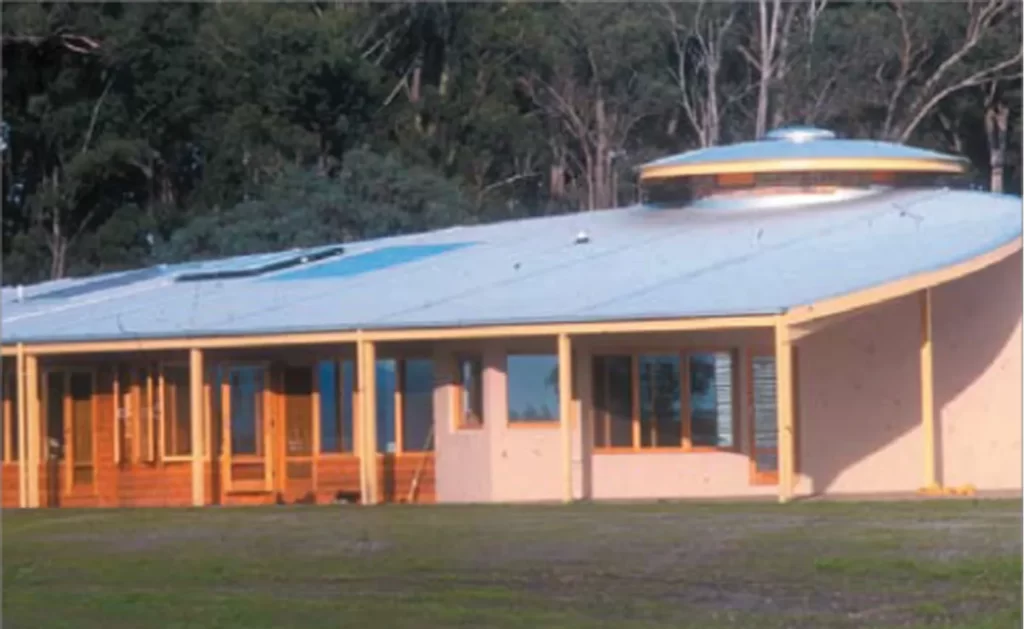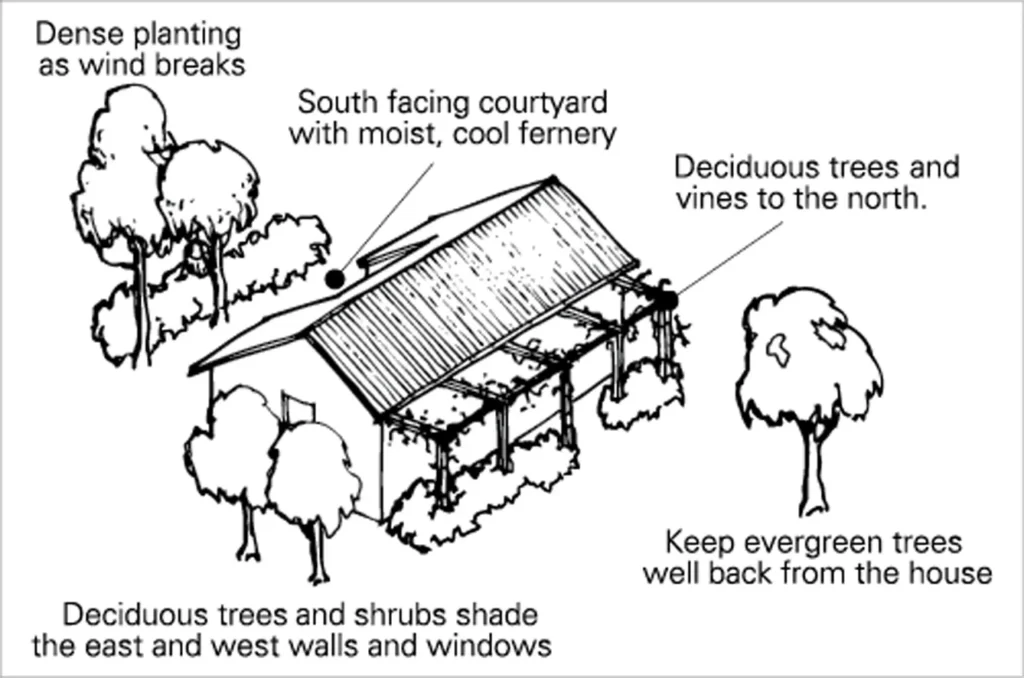If you want to know about the building shading or site analysis or sustainable site planning, please click the link.
Shading according to climate-specific responses is an effective way to reduce energy consumption in buildings and improve their indoor environmental quality. This approach involves using different shading strategies that are tailored to the climate and local conditions of a building site, taking into account factors such as solar radiation, wind, temperature, and humidity.
Climate specific responses
- In high humidity climates and hot dry climates with warm winters, shade the building and outdoor living spaces throughout the year.
- For all other climates, use appropriate passive solar design principles.
1) Hot humid climates
In hot humid climates, it is essential to shade the walls year-round and highly advantageous to shade the whole roof.
- Shade all external openings and walls including those facing south.
- Use covered outdoor living areas such as verandas and deep balconies to shade and cool incoming air.
- Use shaded skylights to compensate for any resultant loss of natural daylight.
- Choose and position landscaping to provide adequate shade without blocking access to cooling breezes.
- Use plantings instead of paving to reduce ground temperature and the amount of reflected heat.
- A ‘fly roof’ can be used to shade the entire building. It protects the core building from radiant heat and allows cooling breezes to flow beneath it.

A fly roof protects a building from radiant heat and encourages cooling breezes.
2) Hot dry climates
- Shade all external openings in regions where no winter heating is required.
- Provide passive solar shading to north-facing openings in regions where winter heating is required.
- Avoid shading any portion of the glass in winter when winter heating is required — use upward raked eaves to allow full winter solar access, or increase the distance between the window head and the underside of the eaves.
- Use adjustable shade screens or deep overhangs (or a combination of both) to the east and west. Deep covered balconies or verandas shade and cool incoming air and provide pleasant outdoor living spaces.
- Place a shaded courtyard next to the main living areas to act as a cool air well. Tall, narrow, generously planted courtyards are most effective when positioned so that they are shaded by the house.
- Use plantings instead of paving to reduce ground temperature and the amount of reflected heat.

Courtyard pools cool through evaporation.
3) Warm humid and warm/mild temperate climates
- Provide passive solar shading to all north-facing openings, using shade structures or correctly sized eaves.
- Use adjustable shade screens or deep overhangs to the east and west. Adjustable shade screens exclude low angle sun the most effectively.

This adjustable shade screen can exclude low angle sun.
4) Cool temperate climates
- Do not place deep covered balconies to the north as they obstruct winter sun. Balconies to the east or west can also obstruct winter sun to a lesser extent.

Covered balconies should allow winter sun access.
- Avoid shading any portion of the north-facing glass in winter — use upward raked eaves to allow full winter solar access or increase the distance between the window head and the underside of the eaves.
- Use deciduous planting to the east and west. Avoid plantings to the north that would obstruct solar access.
Using plants for shading
Match plant characteristics (such as foliage density, canopy height and spread) to shading requirements. Choose local native species with low water requirements wherever possible.

Plants can provide shade and act as windbreaks.
In addition to providing shade, plants can assist cooling by transpiration. Plants also enhance the visual environment and create pleasant, filtered light (see Landscaping and garden design).
- Deciduous plants allow winter sun through their bare branches and exclude summer sun with their leaves.
- Trees with high canopies are useful for shading roofs and large portions of the building structure.
- Shrubs are appropriate for more localised shading of windows.
- Wall vines and ground cover insulate against summer heat and reduce reflected radiation.
Shading for a healthier environment
Appropriate shading practices reduce the chance of exposure to harmful ultraviolet rays. Planting is a low cost, low energy provider of shade that improves air quality by filtering pollutants.
Shading and daylight
Choose shading methods that allow adequate amounts of daylight into the building while preventing unwanted heat gain.
- Select plants that allow filtered light into the building (see Landscaping and garden design).
- Design glazing to admit maximum light for minimum heat gain. Clear sections in veranda roofs can be useful (see Glazing).
- Light coloured external surfaces or shading devices reflect more sunlight into the building.
- Depending on the situation this can be beneficial, or it can create unwanted glare (see Lighting).
Overall, shading according to climate-specific responses can help to create more comfortable and sustainable buildings that respond to the local environment and the needs of their occupants. It is important to work with a design professional who is knowledgeable about climate-responsive design and can help to optimize shading strategies for your specific building site and climate zone.